20 Best Climbing Plants for Any Trellis, Pergola, or Fence
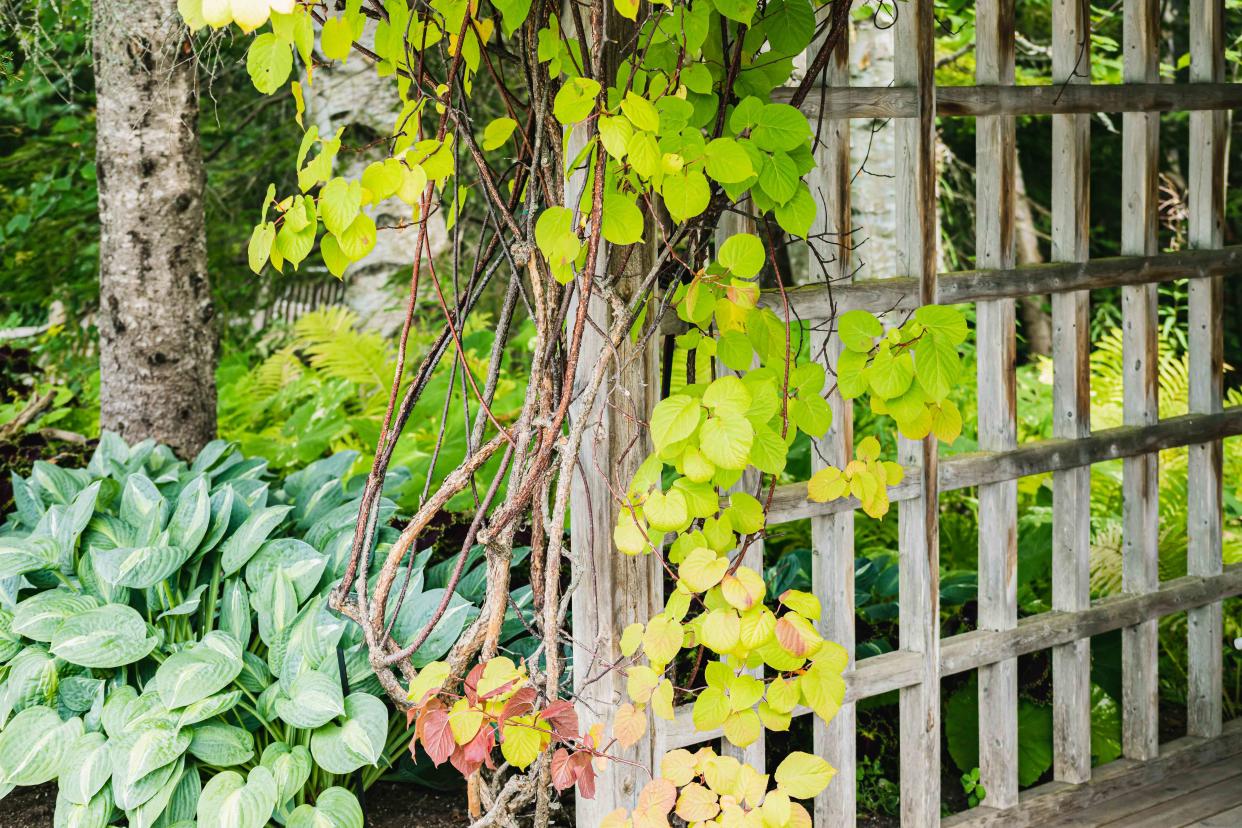
The Spruce / Autumn Wood
A climbing plant is the perfect way to take your garden to new heights—literally. These plants are known for their height and, with a little support, create gorgeous vertical blooms. Here are some of the best climbing plants for a trellis, pergola, or fence.
American Beauty Rose (Rosa ‘American Beauty’)
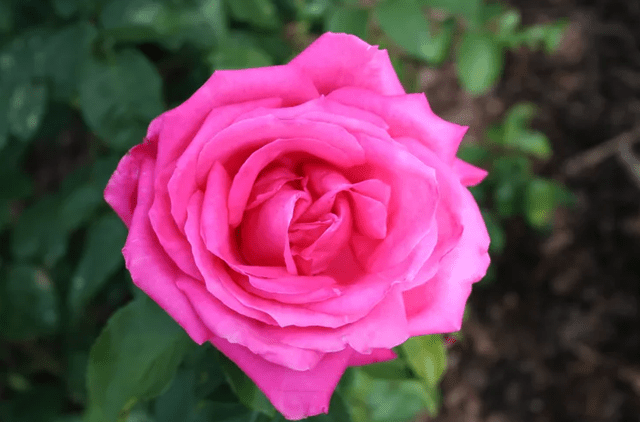
Perry Quan / Flickr / CC By 2.0
The American Beauty rose is a climbing rose that adds pops of color to your fence. While it doesn’t grow to be as tall as some of the climbers on this list, this rose is ideal for smaller trellises or a garden fence.
USDA Growing Zones: 5 to 9
Size: 12 to 15 feet tall, 5 to 8 feet wide
Sun Exposure: Full sun
Soil Needs: Well-drained
Apple Blossom Clematis (Clematis armandii)
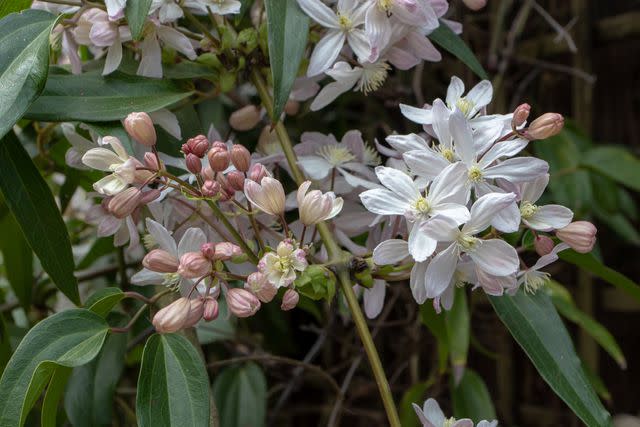
photohampster / Getty Images
The flashy blooms on the Apple Blossom Clematis aren’t just for looks—the clusters of flowers also produce an almond-like aroma. With the proper care and support, this plant climbs to heights of 20 to 40 feet tall and grows to be 20-plus feet wide.
USDA Growing Zones: 7 to 9
Size: 20 to 40 feet tall, 20 to 40 feet wide
Sun Exposure: Full sun
Soil Needs: Well-drained
Arctic Kiwi (Actinidia arguta)
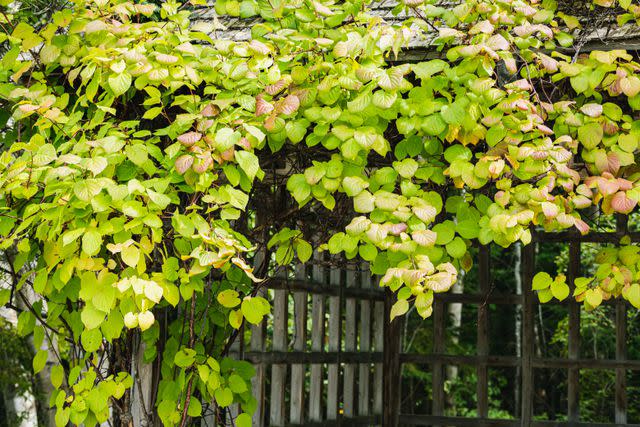
The Spruce / Autumn Wood
This type of hardy kiwi is native to Russia and thrives in subtropical climates. This climber has gorgeous green leaves with striking white and pink patches, and you can expect ripe fruit in late summer.
USDA Growing Zones: 4 to 8
Size: 10 to 12 feet tall, 10 to 12 feet wide
Sun Exposure: Partial shade
Soil Needs: Well-drained, loamy
Black-Eyed Susan Vine (Thunbergia alta)
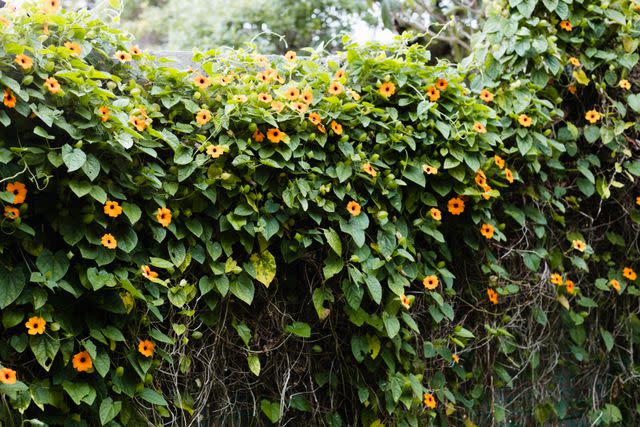
The Spruce / Michelle Becker
Black-eyed Susan vines are smaller (reaching only 3 to 8 feet tall), but this easy-to-care-for climber adds charm to wherever it climbs. But while it’s short, this climbing plant grows quickly and can sprout 8 feet in just one growing season.
USDA Growing Zones: 10 and 11
Size: 3 to 8 feet tall, 3 to 6 feet wide
Sun Exposure: Full or partial sun
Soil Needs: Well-drained, loamy
Blue Moon Kentucky Wisteria (Wisteria macrostachya)
This climber is native to the southern U.S. and sports clusters of showy blue flowers, which gives the vine its name. The Blue Moon Kentucky Wisteria’s blooms can grow up to a foot long and, from a distance, look like grapes.
USDA Growing Zones: 3 to 9
Size: 15 to 25 feet tall, 4 to 8 feet wide
Sun Exposure: Full sun
Soil Needs: Well-drained
Bougainvillea (Bougainvillea)
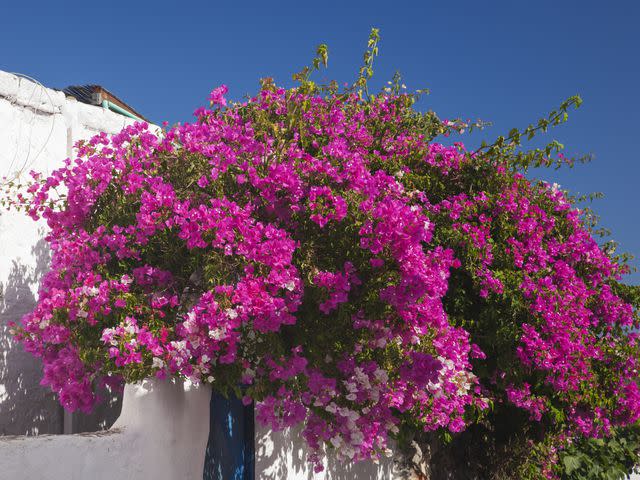
David C Tomlinson / Getty Images
Bougainvillea, known by both its common and scientific name, is a thorny vine covered in flowers. When in full sun and properly supported by a trellis or pergola, Bougainvillea can grow up to 40 feet tall. Or, if you’re looking for some flowering ground cover, this plant can spread along the floor of your garden.
USDA Growing Zones: 9 to 11
Size: 15 to 40 feet tall
Sun Exposure: Full sun
Soil Needs: Well-drained
Chocolate Vine (Akebia quinata)
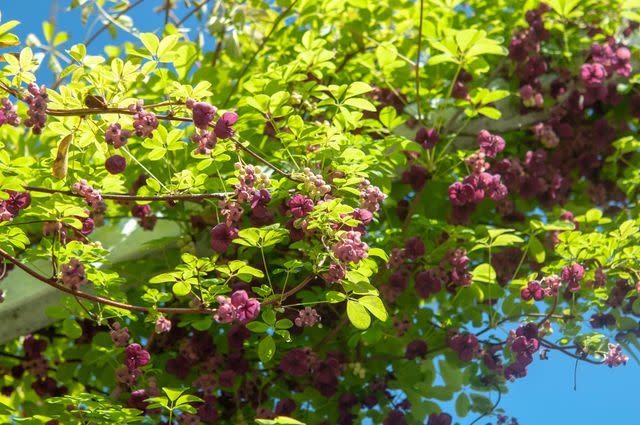
The Spruce / Evgeniya Vlasova
The chocolate vine gets its name from the climber’s unique purple-brown flowers and aroma that’s reminiscent of chocolate. This climbing plant is long and slender, snaking up trellises and winding around pergolas. It’s also fast-growing and can sprout 40 feet in just one growing season.
USDA Growing Zones: 4 to 8
Size: 15 to 30 feet tall, 1 to 2 feet wide
Sun Exposure: Full sun, partial shade
Soil Needs: Sandy, loamy
Climbing Hydrangea (Hydrangea petiolaris)
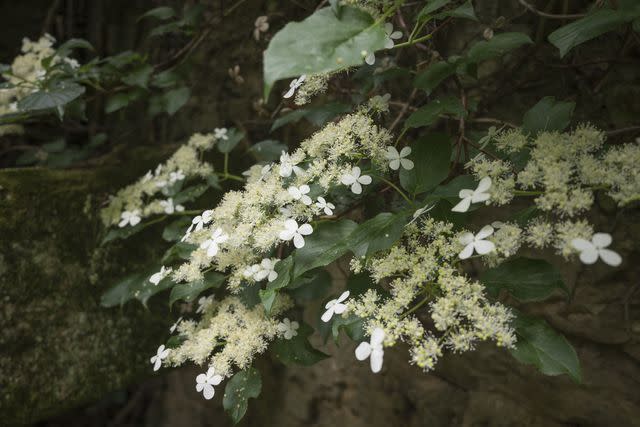
Elizabeth Fernandez / Getty Images
Green leaves and white flowers dance together on climbing hydrangeas. But tending to this climber is a practice in patience; the vine is slow to grow and can take several years before its characteristic flowers bloom.
USDA Growing Zones: 4 to 8
Size: 30 to 50 feet tall, 5 to 6 feet wide
Sun Exposure: Full sun, partial shade
Soil Needs: Moist and well-drained
Concord Grapes (Vitis labrusca ‘Concord’)
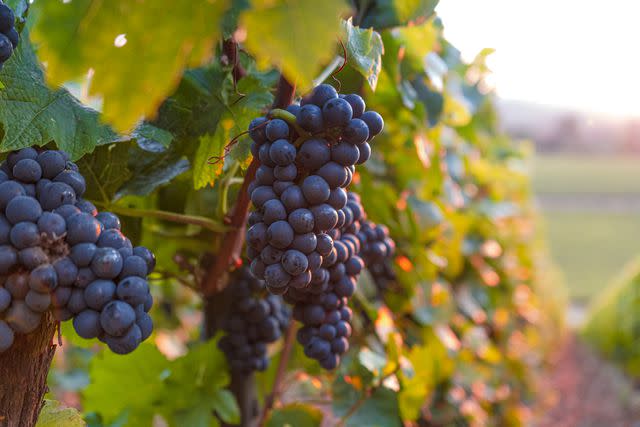
wilatlak villette / Getty Images
The Concord grape may have gotten its start in Massachusetts, but the vine can thrive in USDA zones 5 through 9. This climbing plant is easy to grow and, after two to four years, will save you cash on your grocery store runs once it bears fruit.
USDA Growing Zones: 5 to 9
Size: 8 to 10 feet tall, 10 to 12 feet wide
Sun Exposure: Full sun
Soil Needs: Well-drained and loamy
Cup and Saucer Vine (Cobaea scandens)
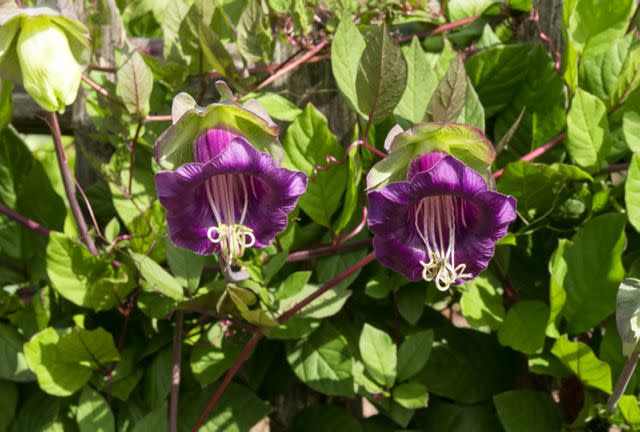
The Spruce / K. Dave
Also called cathedral bells, the cup and saucer vine is dotted with cup-shaped flowers that can be either purple or white. This plant is typically started from seeds but grows so quickly that you won’t have to wait long for it to scale your trellis.
USDA Growing Zones: 9 to 11
Size: 10 to 20 feet long, 3 to 6 feet wide
Sun Exposure: Full sun
Soil Needs: Moist and well-drained
Cypress Vine (Ipomoea quamoclit)
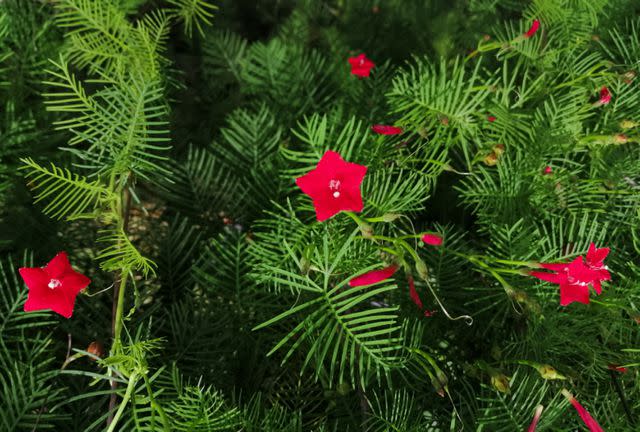
The Spruce / K. Dave
What sets the Cypress vine apart from other climbers is how delicate it looks. The vine is dotted with star-shaped red flowers against fern-like leaves to add a unique look to your landscape.
USDA Growing Zones: 11 and 12
Size: 6 to 15 feet tall, 3 to 6 feet wide
Sun Exposure: Full sun
Soil Needs: Moist and well-drained
Don Juan Rose (Rose ‘Don Juan’)
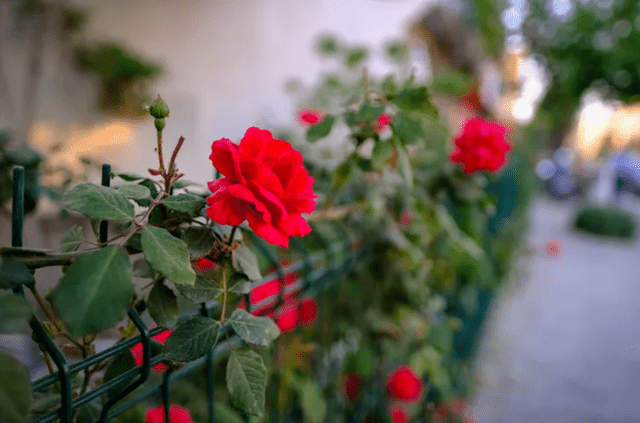
Willy Sebastian / Getty Images
Picture the ideal rose, and there’s a good chance it looks like the Don Juan. The 4-inch blooms are layered with dozens of petals and a deep, velvety red. With its backdrop of deep green leaves, this climbing plant is absolutely striking wherever it’s planted.
USDA Growing Zones: 6 to 10
Size: 9 to 10 feet tall, 6 feet wide
Sun Exposure: Full sun
Soil Needs: Moist and well-drained
Highwire Flyer Rose (Rosa ‘Highwire Flyer’)
Despite its name, the Highwire Flyer rose isn’t growing to dizzying heights. Instead, the plant typically reaches 4 to 6 feet in height—making the climber manageable while still tall enough to make it the ideal decoration for a garden fence. Big, hot pink blooms are its centerpiece.
USDA Growing Zones: 5 to 8
Size: 4 to 6 feet tall, 5 to 6 feet wide
Sun Exposure: Full sun
Soil Needs: Well-drained
Madagascar Jasmine (Stephanotis floribunda)
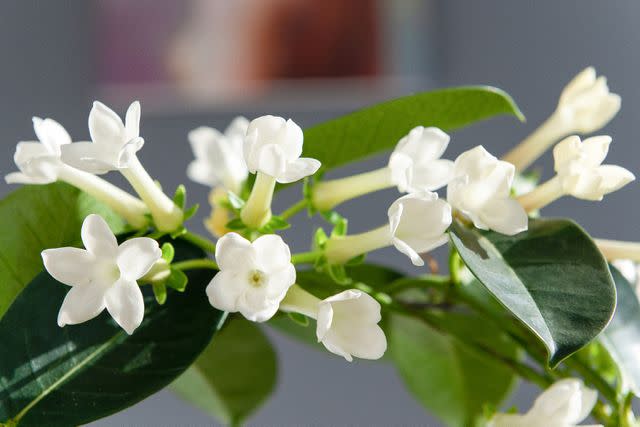
The Spruce / K. Dave
Madagascar jasmine is known for the small, white, and trumpet-shaped flowers decorating its vines. The plant can grow up to 20 feet tall on your trellis, but it can also double as a houseplant and stick to an easy-to-contain 3 to 4 feet in a pot.
USDA Growing Zones: 10 to 13
Size: 10 to 20 feet tall
Sun Exposure: Full sun or partial shade
Soil Needs: Well-drained
Mandevilla
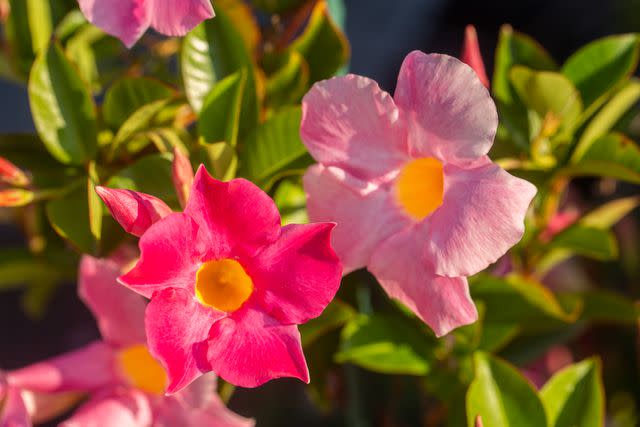
The Spruce / Phoebe Cheong
The Mandevilla genus encompasses a wide variety of flowering vines. While all have five petals and are shaped like trumpets, the size and color depend on your specific species. Mandevilla grow quickly, but only reach about 10 feet maximum and don’t spread wide, so they won’t overgrow in your garden.
USDA Growing Zones: 10 and 11
Size: 3 to 10 feet tall, 3 to 4 feet wide
Sun Exposure: Full sun or partial shade
Soil Needs: Moist and well-drained
Souvenir de la Malmaison Rose (Rosa ‘Souvenir de la Malmaison’)
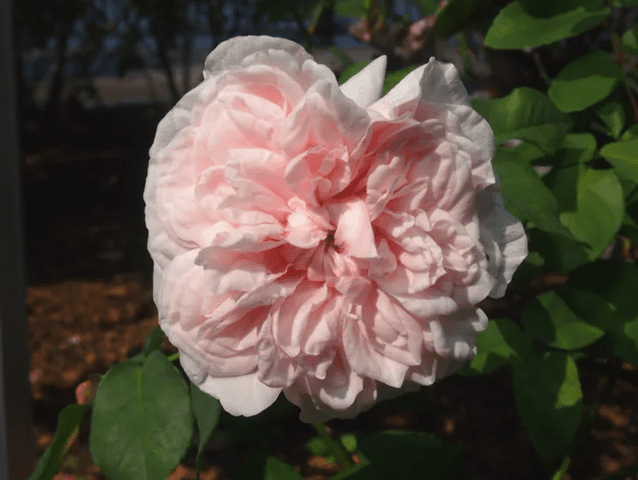
akimari / Getty Images
Another variety of climbing rose, the Souvenir de la Malmaison has blush-colored blooms and can grow to be 20 feet tall. It grows vigorously and is the climber version of a Bourbon rose.
USDA Growing Zones: 6 to 9
Size: 20 feet tall, 8 feet wide
Sun Exposure: Full sun or partial shade
Soil Needs: Moist and well-drained
Star Jasmine (Trachelospermum jasminoides)
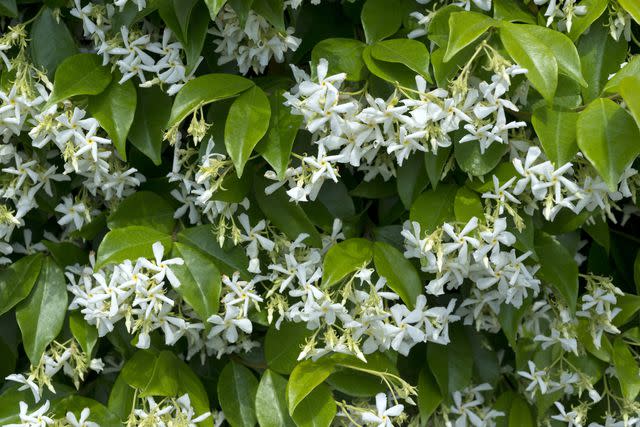
Prisma by Dukas / Getty Images
The flowers on the star jasmine vine may be tiny, but they’re fragrant and are known to attract bees to your garden. Like many other climbing plants, it sprouts up fast—plant it in the spring and you could have 3 to 6 feet of vine scaling a trellis within the year.
USDA Growing Zones: 5 to 10
Size: 3 to 6 feet tall, 3 to 6 feet wide
Sun Exposure: Full sun or partial shade
Soil Needs: Moist and well-drained
Sweet Pea (Lathyrus odoratus)
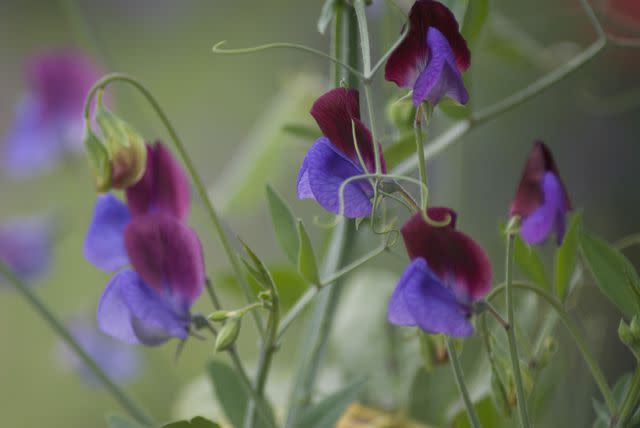
Flowerphotos / Contributor/Getty Images
Colorful and fragrant sweet peas are the perfect way to bring a cottagecore look to your garden. With varieties of pink, blue, white, red, and lavender flowers, this climbing plant makes it easy to add some color to your trellis or pergola, too. But don’t let the “pea” in their name fool you—these plants are toxic if consumed by humans or pets.
USDA Growing Zones: 3 to 8
Size: 6 to 8 feet tall
Sun Exposure: Full sun or partial shade
Soil Needs: Well-drained
Trumpet Vine (Campsis radicans)
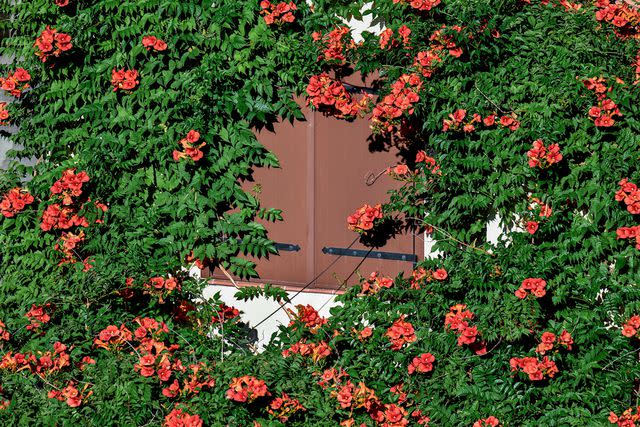
SOPA Images / Getty Images
Like this climber’s name suggests, the vine is covered in flowers that look like trumpets in both color and shape. The long red, orange, or yellow blooms blossom each summer and fuel pollinators like hummingbirds and bees, especially if you install a hummingbird feeder.
USDA Growing Zones: 4 to 9
Size: 25 to 40 feet tall, 5 to 10 feet wide
Sun Exposure: Full sun or partial shade
Soil Needs: Moist and well-drained
Yellow Jasmine (Chrysojasminum humile)
This jasmine vine is another great choice for your garden because they’re a manageable size and easy to care for. Also known as Italian jasmine, the climber’s sunshine-yellow flowers stand boldly against its green leaves.
USDA Growing Zones: 7 to 9
Size: Up to 7 feet tall
Sun Exposure: Full sun or partial shade
Soil Needs: Well-drained
Tips and Considerations for Choosing Climbing Plants
Avoid Invasive Species
Before planting anything in your garden, make sure the plant you’ve selected is not invasive to your area, Nicolette McCary, co-owner of Seattle Sustainable Landscapes, says. Some plants, like Chinese wisteria and porcelain vine will quickly overtake your landscape and may even be illegal in your area.
"One plant to almost always avoid is Morning Glory," McCary says. "This fast-growing perennial is considered invasive in most states, and is currently illegal to grow, possess, or plant in some states like Arizona."
Consider Combining Climbers
Growing two climbing plants on a single structure can elevate your garden design, but it should be done with some forethought.
"Climbers, by nature, will tangle and intertwine with each other, using the other’s vines for support," McCary says. "It's best to pick two species that will work in tandem rather than choke each other out."
McCary explains how since they may intertwine, you will have to be ready to either keep both plants or remove all of them, which may be hard to selectively remove once they’ve gotten started.
Be Aware of Toxicity
Some climbers are toxic to consume. While you probably won't be gnawing on your vines, toxicity is important to consider if you have pets or small children. Do your research beforehand before planting any toxic plants in your garden.
Read Next: 17 Best Climbing Roses for Your Garden
Read the original article on The Spruce.

